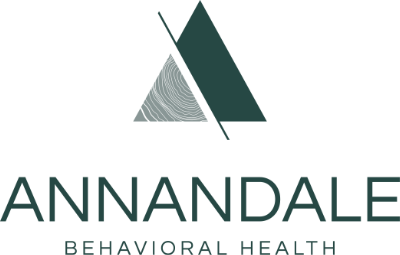Abusing and Snorting Gabapentin
Table of Contents
Gabapentin, sold under the brand name Neurontin, continues to be named among the ten most prescribed drugs in the U.S. Learn how this GABA analog has become a substance of abuse in recent years, specifically the practice of snorting gabapentin.
What is Gabapentin And What is It Used For?
Gabapentin is an anticonvulsant drug that is routinely prescribed for epilepsy, nerve pain, restless leg syndrome, seizure disorders, and chronic pain. In addition, the drug is prescribed off label for various conditions, such as sleep disorders, anxiety, and alcohol withdrawal.
As a GABA analog, gabapentin acts to slow activity in the central nervous system, but it doesn’t bind to GABA receptors. It does increase levels of GABA in the brain and decreases the levels of glutamate.
While gabapentin is considered safe and is not a controlled substance, it is gaining traction as a drug of abuse. This is due to the sensations of euphoria, calm, and intoxication is produces when taking a high dosage. In addition, individuals are snorting gabapentin to experience a more intense high, even though it’s meant to be taken orally.
Why Are People Snorting Gabapentin?
Misuse of gabapentin is a growing problem in the U.S. A recent study reports that between 40%-65% of gabapentin abuse among patients who are prescribed the drug. Increasing numbers of people misuse this drug by inhaling the contents of the capsules or crushing the pills to get high.
Snorting gabapentin results in a sense of calm, increased sociability, and empathy toward others. It also is misused to enhance the effects of other drugs, such as marijuana, benzos, or illicit drugs.
Dangers of Snorting Gabapentin
This drug only meant to be taken orally via pill or capsule, which allows it to be processed through the gastrointestinal tract. Snorting this drug causes it to be absorbed rapidly, which can cause severe adverse effects. The half-life of this drug ranges from 5-7 hours.
There are several short and long-term health risks linked to gabapentin abuse, including:
- Nasal tissue damage
- Respiratory distress
- Abnormal eye movements
- Blurred vision
- Panic attacks
- Weight gain
- Insomnia
- Aggressive behavior
- Heart arrhythmia
- Respiratory failure
- Increased blood pressure
- Problems with blood circulation
- Kidney damage
- Psychotic episodes
- Suicidal thoughts
- Allergic reaction, causing hives, swollen tongue and lips, yellowing of the eyes, unusual bleeding or bruising, and toxic delirium.
While gabapentin abuse can lead to increased tolerance and dosing, the main risks to this drug involve the other substances taken with it. This can result in an overdose, or a polydrug addiction.
Gabapentin overdose symptoms may include:
- Muscle weakness
- Slurred speech
- Nausea
- Vomiting
- Diarrhea
- Mental confusion
- Blue-tinged fingertips
- Lethargy
- Difficulty breathing
- Blurred or double vision
- Low blood pressure
- Weak pulse
- Loss of consciousness
Signs of Gabapentin Abuse or Addiction
The signs of gabapentin addiction are generally the same as other substances of abuse, aside from the sudden weight gain. Some common signs of abuse or addiction include:
- Being unable to cut back or quit the drug
- Increased tolerance to its effects
- Secretive behaviors
- Spending abundant time getting the drug, such as doctor shopping
- Drug cravings
- Social withdrawal
- Continue to take gabapentin, despite problems it causes
- Neglecting responsibilities
- Money problems
- Weight gain
- Having withdrawal symptoms when the drug wears off
Gabapentin Detox and Withdrawal
When someone has developed gabapentin dependence or addiction and wishes to quit the drug, they must first complete a detox. The safest way to accomplish this first step in recovery is to enroll in a residential detox and withdrawal program. Detox services are provided within the campus of a rehabilitation center, allowing the individual to smoothly transition into treatment.
It is possible for someone to complete the detox in about 5-7 days, however withdrawal symptoms will be severe. Instead, it is usually advised that someone wishing to stop gabapentinthan if the person were to wean off the drug. Tapering allows the body to slowly acclimate to reduced dosing over a period of days. Although this tapering process will add a few days to the detox period, it makes detox much easier to endure.
Gabapentin Withdrawal Timeline
Early phase: The detox and withdrawal process begins to unfold about 12-48 hours after the last dose when the early symptoms emerge. Symptoms you can expect on the first day of detox include:
- Sweating
- Headache
- Anxiety
- Heart palpitations
- Tremors
- Seizures
On about day 3 symptoms begin to intensify. These might include:
- Agitation
- Fever
- Trembling
- Disorientation
- Restlessness
- Rapid heart rate
- Mental confusion
- Hallucinations
On days 4-5 of the detox, symptoms may include agitation, confusion, anxiety, and light sensitivity. By the one-week mark, most withdrawal symptoms have subsided.
Treatment for Gabapentin Addiction
After the detox has been completed, the level of care for treatment will be largely determined by the duration of the addiction. Other considerations include the average daily dosing, and whether there is another drug involved.
If the gabapentin abuse is fairly short-lived and there are no other substances involved, an outpatient program is sufficient. However, for those individuals that abuse other drugs along with the gabapentin, the best level of care is a residential rehab.
Rehab will involve a multi-faceted treatment approach that helps you change the entrenched addiction thoughts and behaviors. Treatment includes:
- Psychotherapy. CBT is the gold standard in addiction treatment because these therapy sessions guide you toward developing healthy new thought patterns. Contingency management is also effective for gabapentin addiction.
- Group work. Support groups include peers in recovery who discuss various topics related to the recovery journey.
- Holistic. Holistic interventions complement the traditional forms of therapy by helping to reduce stress and promoting wellbeing. These activities include meditation, breath work, yoga, and grounding techniques.
Help awaits anyone who has found themselves with a gabapentin problem. Please reach out today for the support you deserve.
Annandale Behavioral Health Provides Treatment for Gabapentin Addiction
Annandale Behavioral Health is a luxury residential rehab that provides comprehensive treatment for gabapentin abuse and addiction. If you or a loved one are abusing or snorting Gabapentin, a residential treatment program would be beneficial. For more information about our program, please reach out to us today at (855) 778-8668.







